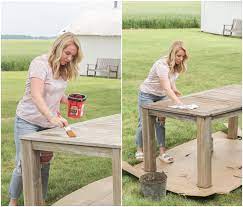Introduction
Outdoor furniture adds charm and functionality to our outdoor spaces, providing a cozy retreat for relaxation and entertainment. However, exposure to the elements can take a toll on outdoor furniture, leaving it worn and weathered. In this guide, we’ll explore effective restoration tips to breathe new life into your outdoor furniture and enhance its longevity.
Assessing the Condition
Before diving into the restoration process, it’s essential to assess the condition of your outdoor furniture. Look for signs of rust, rot, or loose joints. Take note of any damaged parts that may require repair or replacement.
Cleaning and Prepping
Start by giving your outdoor furniture a thorough cleaning. Use a mild detergent or specialized cleaner appropriate for the material of your furniture. Scrub away dirt, grime, and mildew, and rinse thoroughly with water. Once clean, allow the furniture to dry completely before proceeding to the next step.
Repairing Damaged Parts
Inspect the furniture for any damaged components, such as broken slats or loose screws. Replace broken parts or tighten loose connections as needed. Consider seeking professional help for complex repairs or sourcing replacement parts from reputable suppliers.
Sanding and Refinishing
To achieve a smooth and uniform finish, sand the surface of the furniture to remove old paint or stain. Start with coarse-grit sandpaper to strip away the existing finish, then gradually switch to finer grits for a smoother surface. Take care to sand along the grain of the wood to avoid damaging the surface.
Choosing the Right Paint or Stain
Selecting the appropriate paint or stain is crucial for the success of your restoration project. Consider factors such as durability, weather resistance, and color options. Opt for high-quality products specifically designed for outdoor use to ensure long-lasting results.
Applying the Paint or Stain
Apply the paint or stain evenly using a brush, roller, or sprayer, following the manufacturer’s instructions. Work in small sections, and avoid overapplying to prevent drips and uneven coverage. Allow sufficient drying time between coats, and ensure proper ventilation during the application process.
Adding Protective Coatings
To safeguard your newly refinished furniture against the elements, consider adding a protective coating such as varnish or sealant. These coatings help prevent moisture damage, UV fading, and mildew growth, extending the lifespan of your outdoor furniture.
Reassembling the Furniture
Once the paint or stain has dried completely, reassemble the furniture, ensuring all parts are securely fastened. Double-check the alignment of components and tighten any remaining loose screws or bolts. Take your time to ensure everything fits together seamlessly.
Tips for Maintaining Restored Furniture
To keep your restored outdoor furniture looking its best, practice regular maintenance. Clean the furniture periodically with mild soap and water, and inspect for any signs of wear or damage. Consider applying a fresh coat of protective coating every few years to maintain its appearance and durability.
Conclusion
Reviving your outdoor furniture through restoration not only enhances its aesthetic appeal but also prolongs its lifespan, allowing you to enjoy it for years to come. By following these restoration tips, you can transform weathered furniture into stylish and functional pieces that elevate your outdoor living space.

